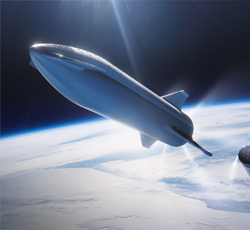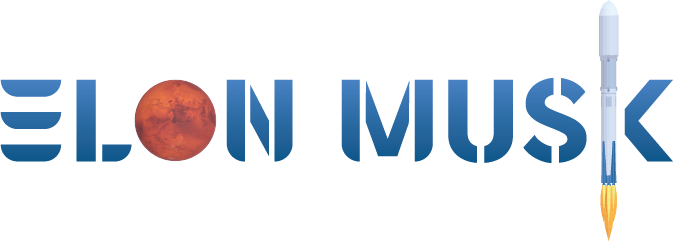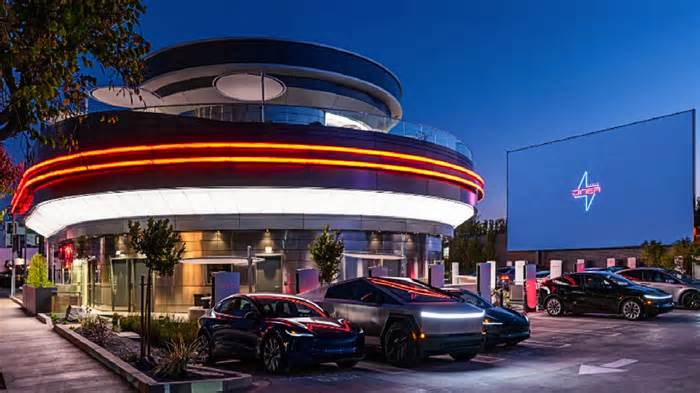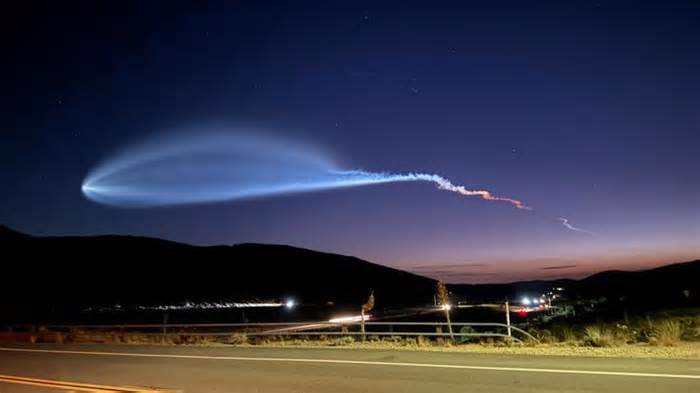
SpaceX Starship: What’s next for the most powerful rocket ever ... - CNN
- by CNN
- Nov 21, 2023
- 0 Comments
- 0 Likes Flag 0 Of 5

Starship and orbital refueling
Being able to recover and rapidly reuse both the Starship spacecraft and the Super Heavy booster are essential to SpaceXâs long-term goals. Such capabilities would make the rocket system affordable and nimble enough to rapidly conduct all the launches necessary to get the vehicle to the moon.
In order to reach lunar orbit, Starship must be refueled while itâs parked near Earth. Thatâs because the massive spacecraft wonât have enough propellant left over to traverse the 238,900-mile (384,472-kilometer) void between our home planet and the moon after the initial launch process.
As of now, SpaceX acknowledges it has to launch more than a dozen Starship tankers to refuel one spacecraft destined for the moon, said Wayne Hale â the chair of the NASA Advisory Councilâs Human Exploration and Operations Committee â in a Saturday interview. Thatâs because of the Starshipâs immense size: Just getting the vehicle into space requires it to burn through the majority of its fuel. And while Starship can hold up to 3 million (1,500 metric tons) of propellant, the spacecraft itself is only capable of hauling up to 55,000 pounds (250 metric tons) of extra cargo to orbit, according to data published by SpaceX and the FAA.
âSo theyâve got to take that rocket that we saw demonstrated ⦠and be able to fly 12, 15 more times for each lunar landing,â Hale told CNN. âThatâs gonna be an impressive feat. Theyâve got to learn how to do that ⦠where itâs successful and reliable every time, and theyâve got to do that in a very short period of time.â
Starship and the Artemis timeline
With many milestones left to hit, itâs clear that even if the next Starship test flight is wholly successful, a moon landing will remain on the distant horizon.
Musk previously acknowledged in 2020 that he hopes SpaceX will launch âhundreds of missionsâ with satellites before attempting a flight with crew. SpaceX also must build and test the versions of Starship that will serve as refueling tankers. A lander must be outfitted with life support equipment. And NASA will require Starship to make an uncrewed test landing on the moon before allowing its astronauts on board.
Still, SpaceX emphasized that explosive failures can be integral to its development process, which embraces fiery mishaps in the early stages of designing a rocket in order to learn how to build a better rocket faster than if the company solely relied on ground tests.
Though SpaceXâs failed test flights garner plenty of critics, it does not mean that the company is moving more slowly or costing more money than if NASA had attempted to develop a lunar lander itself.
All told, NASA will pay SpaceX about $4 billion for two lunar landings. (The company has already invested more than $3 billion in developing its South Texas launch facility and the Starship Super Heavy launch system since 2014, according to an FAA court filing dated May 19.)
NASA Astronaut Christina Hammock Koch speaks during a Washington media gathering on May 18, 2023, as NASA astronauts Victor Glover and Reid Wiseman and CSA (Canadian Space Agency) astronaut Jeremy Hansen look on. Wiseman, Glover, Hammock Koch, and Hansen, are expected to fly around the moon on NASA's Artemis II flight test, slated for 2024.
Bill Ingalls/NASA
For comparison, the Space Launch System rocket and Orion spacecraft that NASA developed for the Artemis program have together cost more than $44 billion since 2006, according to data aggregated by the nonprofit Planetary Society. That rocket system had its first flight test last year. Under NASAâs current plans, SLS and Orion would transport astronauts from Earth to lunar orbit, while Starship would complete the final leg of the journey, ferrying them from the Orion spacecraft to the moonâs surface.
But Hale noted that SpaceX doesnât use the same development approach as NASA. The space agency spends years on careful design and rigorous ground testing â all but guaranteeing success on the first flight. In contrast, SpaceX wants to put early prototypes in the air, accepting that they may explode but will likely provide valuable information for future testing.
âThis is a different paradigm,â Hale said of Starship development. âThe government â when youâre working with the taxpayersâ dollars â you really want to be careful and make sure you succeed.
âWhereas (SpaceX) is a private company,â Hale added. âYes, theyâre doing this work in support of the government, but their methodology is quite different. And I think you could be successful either way. But, this way certainly has its exciting moments.â
Another lunar lander: Starship vs. Blue Moon
Starship can also be compared with Blue Moon, another lunar lander under development by the Jeff Bezos-owned space company Blue Origin. NASA selected Blue Moon as an alternative lunar lander for future Artemis missions.
NASA expects to pay the company $3.4 billion for a single crewed lunar landing â the Artemis V mission currently slated for 2028 â with Blue Origin investing at least that much of its own money.
Lakiesha Hawkins, NASAâs assistant deputy associate administrator for NASAâs Moon to Mars program, said at its advisory councilâs Human Exploration and Operations Committee meeting last week that Blue Originâs lunar lander wonât necessarily be simpler than SpaceXâs behemoth rocket and spacecraft system.
DUNHUANG, CHINA - JUNE 07: Tourists visit the Mingsha Mountain and Crescent Spring scenic spot with the Moon in the background on June 7, 2023 in Dunhuang, Jiuquan City, Gansu Province of China. (Photo by Zhang Xiaoliang/VCG via Getty Images)
Zhang Xiaoliang/VCG/Getty Images
Please first to comment
Related Post
Stay Connected
Tweets by elonmuskTo get the latest tweets please make sure you are logged in on X on this browser.






 Energy
Energy


















